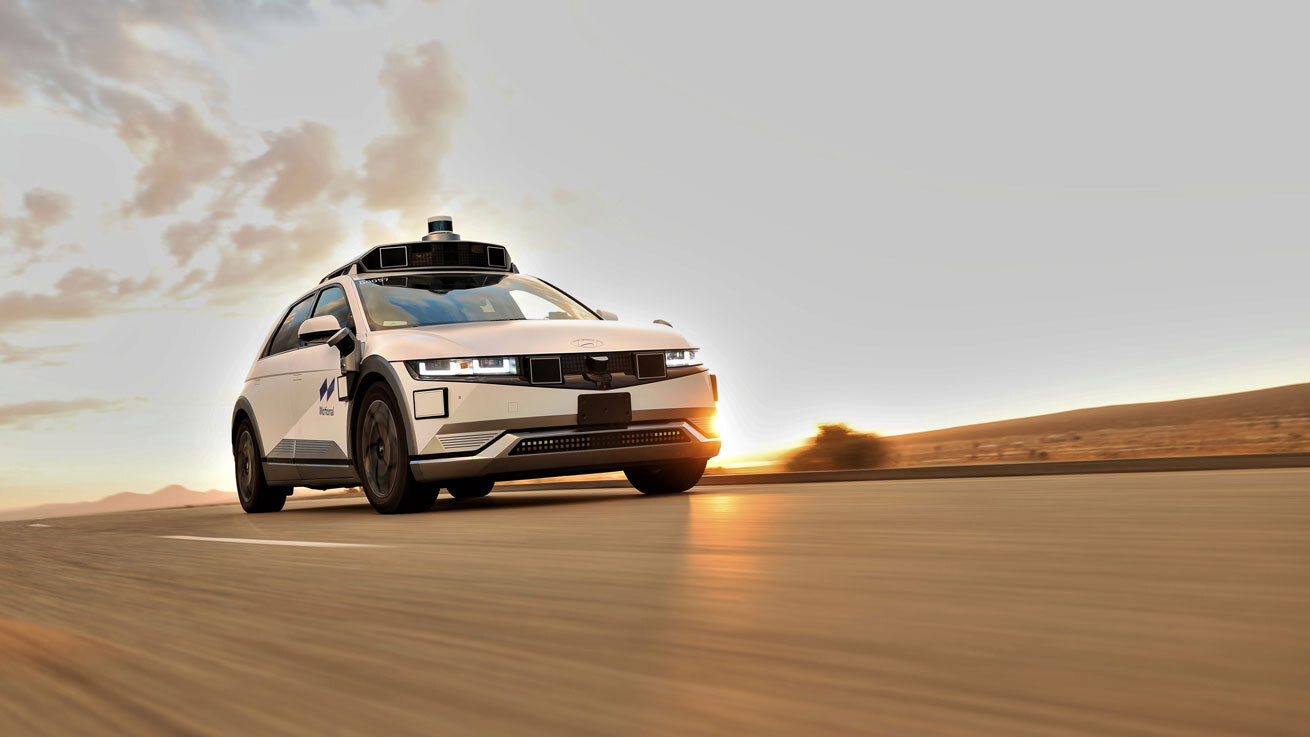Motional and Hyundai Motor Group worked across the globe and around the clock -- while forging through a global pandemic -- to create our latest generation robotaxi based on the Hyundai IONIQ 5 in less than a year.
Motional’s heritage includes creative, hands-on start-ups that built autonomous hardware from scratch. From nuTonomy to Aptiv and today as Motional, together we bring decades of technological innovation and experience from seven autonomous vehicles that we have driven on public roads. We leaned on this experience and collaborated closely with Hyundai Motor Group to address autonomous driving requirements and integrate our hardware set onto their brand new vehicle architecture at the earliest stages of pre-production.
The result? An industry-leading, all-electric robotaxi that focuses on performance as well as design.
This has been one of the most exciting – and challenging – projects I’ve been a part of in my 20-plus years in the automotive industry, and I’m incredibly proud and humbled by what the Motional and Hyundai teams have created together in a short amount of time.
As we prepare for commercial launch, I wanted to reflect on four approaches we took to building our next-generation robotaxi that contributed to our success with this effort and will continue to inform Motional’s technology development far into the future.
1. Be Disciplined
Once a company decides on their hardware set and inches closer to production, any late changes can derail a program by driving up costs and causing significant delays. The Motional team knew that, to achieve our goal of building and launching a robotaxi fleet at scale, we needed to be incredibly disciplined in our product development process when it came to our hardware design and sourcing.
By staying committed to our choices, we were able to focus our time and energy on advancements in our software stack rather than integrating and then testing new hardware components.

The Hyundai IONIQ 5 robotaxi's hardware suite includes radar, lidar, cameras, microphones, speakers, GPS, antennas, LED lights, and more.
2. Build Together
Motional was able to leverage our close partnership with Hyundai Motor Group early on in the engineering and design process for the IONIQ 5 robotaxi. Our hardware, software, and autonomy teams located around the globe were able to design a robotaxi platform that features fully integrated, automotive-grade hardware. This means passengers won’t find any powder-coated, bolt-on brackets on our robotaxi; all hardware will be installed during the manufacturing process.
It was also incredibly important that our vehicle not only achieve the highest-possible performance and safety standards, but be an experience that riders will enjoy and want to continue to use. Our design is informed by some incredible research our product teams did to ensure an intuitive passenger experience was designed into the vehicle from the outset.
3. Engineer for the Future
To build a commercially viable product, we set out to design a set of hardware that not only meets technical requirements for our initial deployment but one that can scale broadly in the future. We determined that a mix of components built in-house, as well as those sourced from trusted suppliers, gave us the semi-custom solution that could meet these goals.
We’ve opened a state-of-the-art vehicle build facility in Pittsburgh, where highly creative and talented engineers and fabricators work in our Formula 1-style garage to develop and test our technology. This includes:
- Developing our custom sensor suite: The Hyundai IONIQ 5 robotaxi includes 30+ sensors – long range lidar providing a full 360 view and up to 300 meters down the road, short range lidar for around-the-car coverage, long-range radar and short-range radar that works with the automatic emergency braking system, and cameras with different lenses and fields of view. And when a sensor becomes dusty or occluded, they can be cleaned autonomously using air and water.
- Performance evaluations: We applied decades of experience to determine the right amount of vision and fields of view to create the safest AV possible that can operate at different speeds and in many environmental conditions. Our automotive-grade hardware is tested at temperatures ranging from -30 degrees celsius to 85 degrees celsius to ensure it provides a reliable and resilient product from an operational, safety, and performance standpoint.
- Powering the AV stack: Every robotaxi will have a high-performance compute system onboard, allowing the vehicle to process the terabytes of information coming in from its sensors. This combination of hardware and software, which operates with the power of a small server farm, will allow the robotaxi to safely drive by calibrating and syncing new data with every sweep, and processing it through our cloud infrastructure.
4. Build to Scale
Our partnerships with our parent companies - Hyundai Motor Group, one of the world’s largest automotive manufacturers, and global automotive technology provider Aptiv - have allowed us to source components for the robotaxi and prepare to launch at scale.
Some of our sensors and components are sourced from Aptiv and Hyundai Mobis. All together, Motional is working with more than two dozen suppliers from around the globe to source the best-possible hardware technology.
Our goal from the start has been to build a fleet of autonomous vehicles that will shape the future of transportation. We’ve stayed the course, remained disciplined in our approach, and are already making tremendous technological leaps. We’ll have the right recipe in hand as Motional branches into additional market opportunities and future platforms.
If you’re inspired to join our team, visit Motional.com/careers to seek out your next opportunity.

